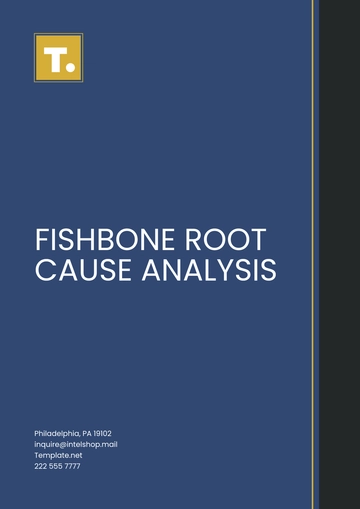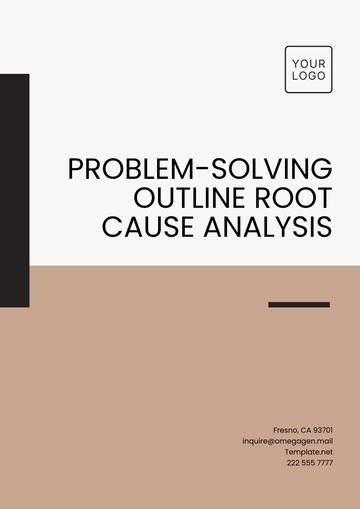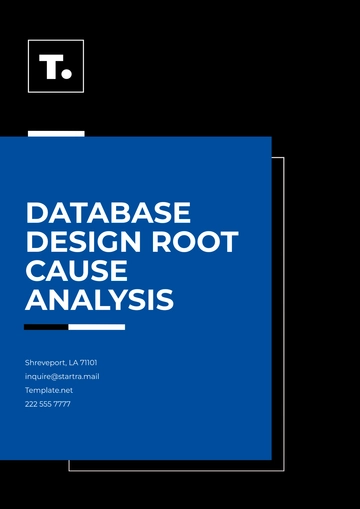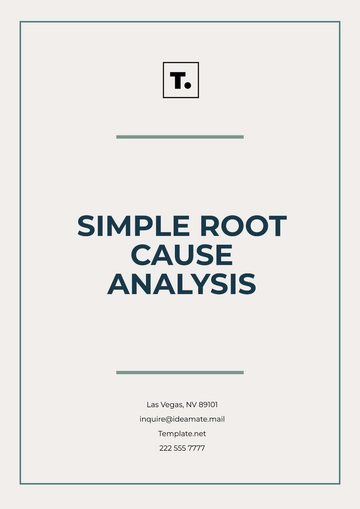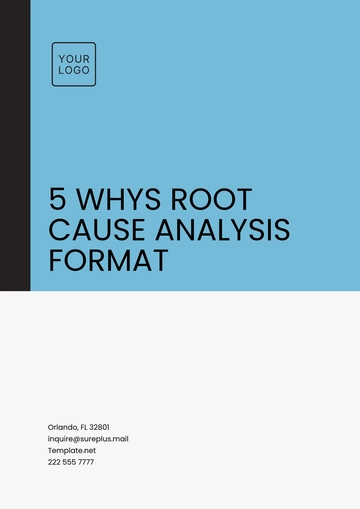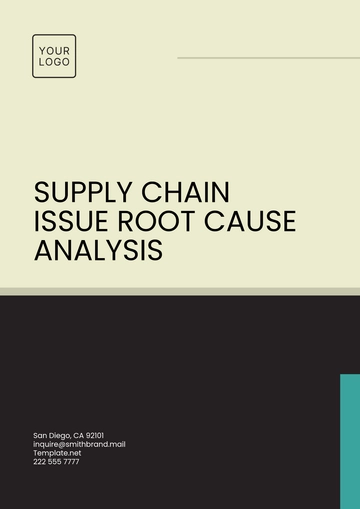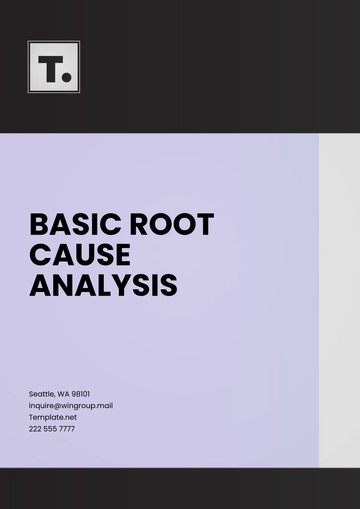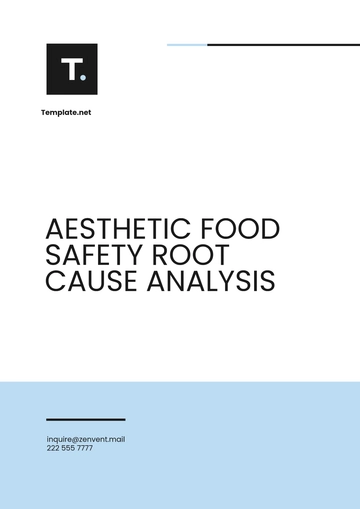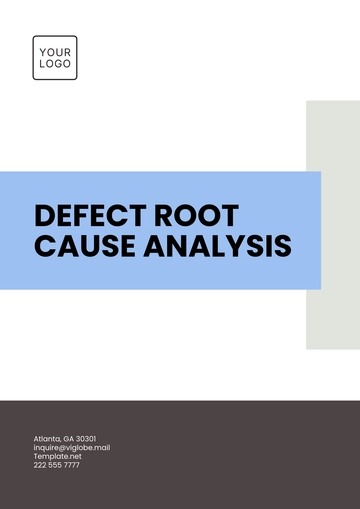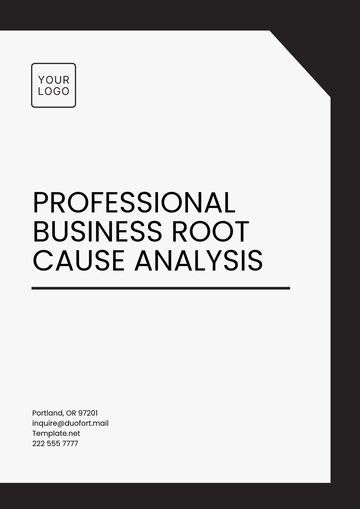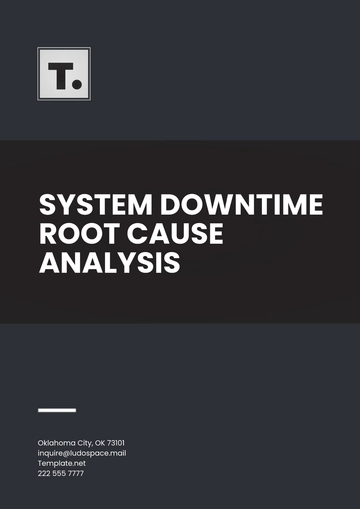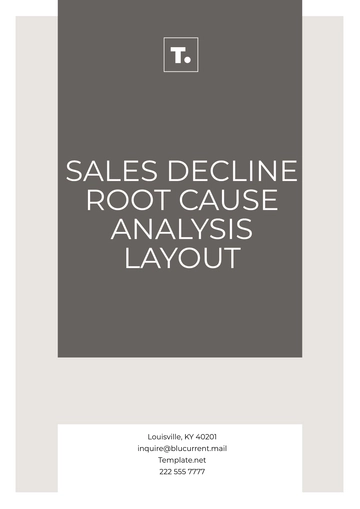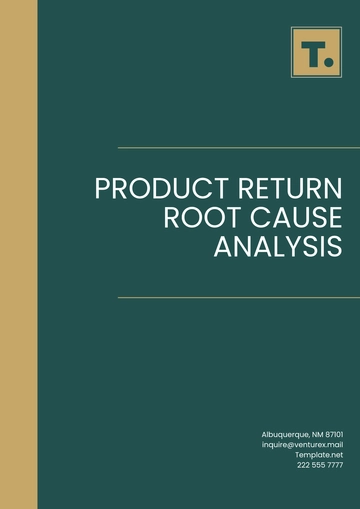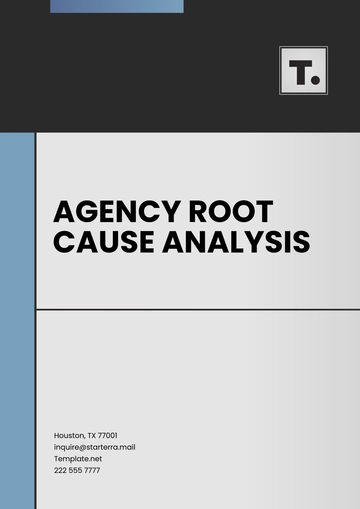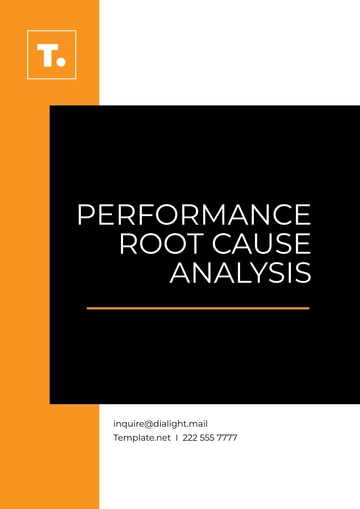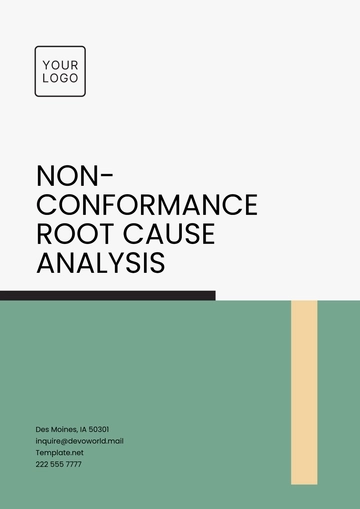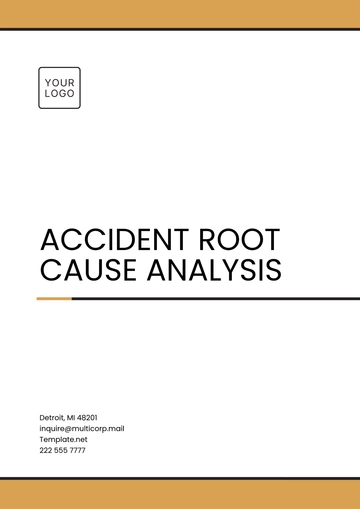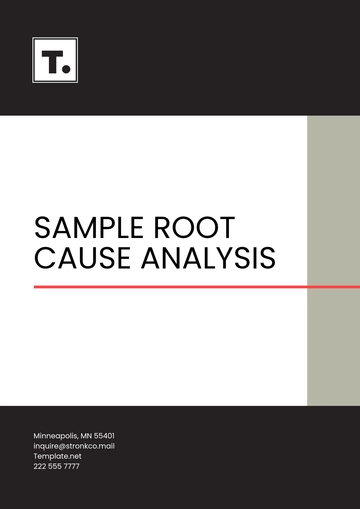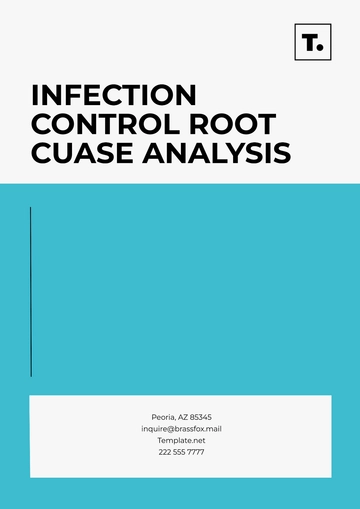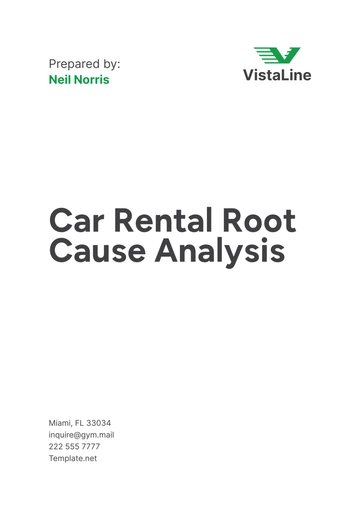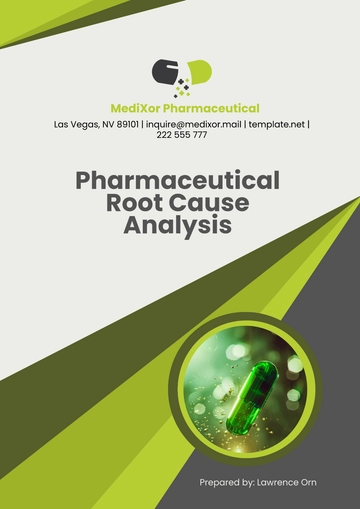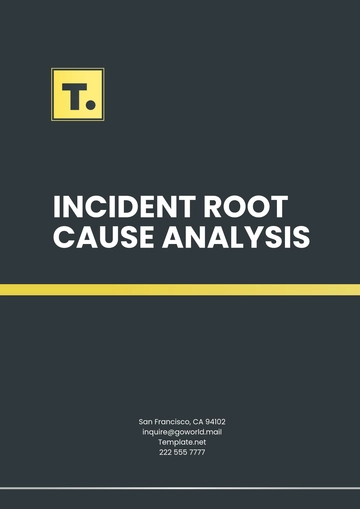Free Sales Financial Analysis of Quarterly Closed Deals

Quarterly Closed Deals
I. Introduction
The purpose of this financial analysis is to scrutinize the sales performance of [Your Company Name] in the fiscal year [2051] with a specific focus on quarterly closed deals. The report evaluates the metrics that define the efficiency and effectiveness of the sales processes within the company. The targeted audience for this report includes upper management, investors, and other stakeholders with a vested interest in financial well-being and operational efficiency. The data has been gathered through internal reporting mechanisms and is considered highly reliable for the purpose of this analysis.
II. Executive Summary
This financial analysis serves to evaluate and outline the key metrics surrounding closed sales deals for [Your Company Name] in the fiscal year [2051]. The objective is to equip stakeholders with an accurate and actionable view of the sales performance, thereby facilitating informed decision-making for future strategic planning. To provide a nuanced perspective, the report includes key findings and subsequent recommendations, which collectively contribute to a more complete understanding of the sales landscape.
III. Quarterly Closed Deals for Fiscal Year 2051
The data below provides a concise snapshot of the performance metrics, including the number of closed deals, total deal value, and closing ratio expressed as a percentage.
Quarter | Total Deal Value |
|---|---|
1 | $1,200,000 |
Quarter | Closing Ratio |
|---|---|
1 | $1,200,000 |
Q1 - Initial Momentum:
The first quarter served as the initial period for establishing the performance metrics for the fiscal year [2051]. A total of [250] deals were closed, generating a deal value of [$1,200,000]. The closing ratio stood at [45%], which may be indicative of opportunities for improvement or simply a slower start to the fiscal year.
Q2 - Sustained Growth:
The second quarter improved across all key metrics. A total of [275] deals were closed, marking a [10%] increase over the first quarter. The deal value also rose by [$200,000], reaching a total of [$1,400,000]. The closing ratio improved to [50%], possibly indicating effective adjustments in sales strategies or seasonal factors contributing to better sales efficiency.
Q3 - Steady Performance with Slight Dip:
The third quarter showed a modest decline in performance metrics but still remained relatively robust. The number of closed deals decreased slightly to [260], and the deal value also showed a minor dip to [$1,300,000]. The closing ratio fell to [48%], suggesting that the sales team faced challenges in deal closures during this period, which could be due to various external or internal factors.
Q4 - Year-End Surge:
The fourth quarter was the strongest of the year across all key performance indicators. A total of [280] deals were closed, representing the highest number for any quarter in 2051. The deal value also peaked at [$1,500,000]. Furthermore, the closing ratio reached its annual zenith at [52%], possibly reflecting the culmination of effective sales strategies and year-end efforts to close pending deals.
Summary of Quarterly Performance:
The detailed analysis of each quarter reveals a generally upward trajectory in the number of closed deals and total deal value. Despite the minor setbacks in Q3, the overall picture suggests that sales strategies were largely effective throughout the fiscal year. However, the closing ratio fluctuated across quarters, indicating room for process optimization and further investigation. By dissecting the performance quarter by quarter, stakeholders can gain nuanced insights into the sales operations of [Your Company Name], facilitating more precise decision-making for future planning.
IV. Key Findings
The data collected and analyzed for the fiscal year [2051] reveal several critical trends and patterns in the quarterly closed deals at [Your Company Name]. Below are the enhanced key findings:
Consistent Upward Trend in Number of Closed Deals:
The data depicts a generally ascending trajectory in the number of closed deals, starting from [250] in [Q1] to [280] by [Q4]. This consistent growth is an encouraging sign, suggesting the sales strategies and market conditions have been favorable. Despite a minor dip in [Q3], the overall trend indicates a solid performance, reinforcing the efficacy of current sales initiatives.
Progressively Increasing Total Deal Value:
The total deal value experienced a quarter-on-quarter increase, from [$1,200,000] in Q1 to [$1,500,000] in [Q4]. This represents a cumulative annual growth rate of approximately [25%]. The increasing deal values signify not only higher sales volume but possibly also an improvement in the average deal size, which is an important metric for assessing the effectiveness of the sales team and pricing strategies.
Variability in Closing Ratio:
While the closing ratio improved from [45%] in [Q1] to a peak of [52%] in [Q4], fluctuations were observed throughout the year. Such variability can result from various factors, such as changes in market conditions, sales team performance, or competitive landscape. This inconsistency in the closing ratio highlights areas where the sales processes can be optimized for better stability and efficiency.
Resilience Against Minor Setbacks:
Although [Q3] observed a marginal decline in the number of closed deals and total deal value, the company quickly rebounded in [Q4]. This resilience suggests that [Your Company Name] is adept at adapting to changes in market dynamics and effectively executing recovery strategies.
Seasonal Variations:
Notably, [Q4] demonstrated the strongest performance across all metrics, hinting at possible seasonal factors that could be affecting sales. This insight could be invaluable for future planning, as leveraging seasonality could lead to maximized sales performance.
By understanding these key findings in-depth, stakeholders are better positioned to make informed decisions for strategic planning, resource allocation, and sales process optimization for the upcoming fiscal year.
Regional Performance Analysis
For a more granular perspective on the company's sales performance, it is beneficial to examine how sales varied by region for fiscal year [2051]. Regional analysis can offer key insights into market penetration, customer preferences, and regional sales team performance.
Metrics by Region (Closed Deals):
Region | Q1 | Q2 | Q3 | Q4 |
|---|---|---|---|---|
North America | 75 | 80 | 70 | 85 |
Regional Insights:
North America
North America stands out as the highest-performing region for [Your Company Name], particularly in the fourth quarter. Its strong contributions to the annual closed deals should not be overlooked. Given this consistent performance, further strategic investments in this market could yield substantial returns. Such investments could range from hiring additional sales personnel to introducing premium product lines tailored to the [North American] consumer base.
Europe
The European market has shown a notable trend of incremental growth over the fiscal year. Given this upward trajectory, [Europe] presents an excellent opportunity for market expansion initiatives. To capitalize on this growth, strategies such as opening new branches, acquiring local companies, or developing products in alignment with [European] preferences should be considered.
Asia-Pacific:
While [Asia-Pacific] demonstrated consistent performance across all quarters, it lacked significant peaks in closed deals. This suggests that a more specialized strategy could help drive higher sales. Given the region's diversity, conducting market segmentation research to identify high-potential sub-markets would be advisable. Moreover, specialized promotional campaigns that cater to the specific tastes and buying behaviors of this market could add impetus to the sales performance.
Latin America
Uniquely, [Latin America] experienced an unexpected surge in closed deals during the third quarter, even as overall company performance dipped. This counter-cyclical behavior implies that the [Latin American] market possesses distinctive qualities that could serve as a stabilizing factor during otherwise underperforming periods. It may be beneficial to conduct in-depth analyses to uncover the underlying factors behind this trend, such as local events or consumer behaviors, and integrate these insights into future regional strategies.
V. Recommendations
Strengthen Sales Training Programs
Given the observed fluctuations in the closing ratio, it is recommended to invest in targeted sales training programs. Such programs can focus on objection handling and value propositioning to improve deal closure rates. Training modules should be data-driven, leveraging insights from this analysis, and tailored to address specific gaps in skills or knowledge.
Dynamic Resource Allocation
Considering the consistent growth in the number of closed deals and total deal value, it would be beneficial to dynamically allocate resources across quarters. This would involve revising staffing needs, budgetary allocations, and other resources to better match the observed quarterly performance trends. Special attention should be paid to resource-intensive periods, such as [Q4], where performance peaked.
Process Optimization and Automation
The variability in the closing ratio suggests that there is room for optimization in the sales process. It may be beneficial to implement automated tools that can streamline routine tasks, thereby allowing the sales team to focus on more complex aspects of deal closure. Automated customer relationship management (CRM) systems can facilitate this optimization effectively.
Conduct Seasonal Market Analysis
The strong performance in Q4 indicates the potential influence of seasonality on sales. A detailed seasonal market analysis is recommended to identify specific seasonal trends, customer behaviors, and competitive pressures. This analysis can inform more strategically timed sales initiatives.
Review Pricing Strategies
The gradual increase in total deal value throughout the year suggests room for flexibility in pricing strategies. Periodic reviews of pricing, perhaps every quarter, should be conducted to assess if the current pricing model is maximizing revenue without sacrificing deal volume.
Post-Deal Review Mechanism
Given that Q3 was a period of slight decline, it would be prudent to implement a post-deal review mechanism. This would involve analyzing closed, lost, and deferred deals to identify common factors contributing to the results. Such reviews can provide actionable insights for immediate course corrections.
Tailored Marketing Campaigns
To maximize impact and outreach, consider the development of marketing campaigns that are deeply rooted in the unique cultural contexts and specific customer needs of each targeted region. For example, festivals and public holidays may be optimal times for launching special promotions or products that resonate with local customs.
Local Partnerships
Forming strategic alliances with local businesses can provide a powerful lever for gaining a competitive edge in new or underperforming markets. Partnerships can help in sharing customer bases, pooling marketing resources, or even co-developing products or services. Additionally, local partners bring in-depth knowledge of the market landscape, providing invaluable insights for optimizing sales and marketing strategies.
Resource Redistribution
Given the variations in regional performance, dynamic resource allocation can serve as a pivotal strategy. Resources such as sales personnel, marketing budget, and inventory could be reallocated to high-performing regions during their peak sales seasons. This would optimize the return on investment and ensure that the company capitalizes on regional market trends effectively.
Regional Training
Regional sales teams should be equipped with training modules tailored to the unique challenges and opportunities prevalent in their respective markets. This could encompass localized sales pitches, negotiation techniques attuned to cultural norms, and even language courses for areas with linguistic barriers. By preparing sales teams with targeted skill sets, the company can improve its regional sales performance and customer engagement levels.
By implementing these enhanced recommendations, [Your Company Name] can build on its existing strengths, address areas of improvement, and better navigate the changing landscape to maximize sales performance for the upcoming fiscal year.
VI. Conclusion
The fiscal year [2051] has proven to be a year of growth for [Your Company Name] regarding closed deals and total deal value. However, there is room for optimization, especially in the closing ratio, which would benefit from a more consistent performance. Adopting the recommendations provided herein will likely result in a more effective and profitable sales operation for the upcoming fiscal year.
- 100% Customizable, free editor
- Access 1 Million+ Templates, photo’s & graphics
- Download or share as a template
- Click and replace photos, graphics, text, backgrounds
- Resize, crop, AI write & more
- Access advanced editor
Gain insights into your sales performance with the use of our Sales Financial Analysis of Quarterly Closed Deals Template! This easy-to-use template allows you to review and analyze the financial aspects of deals closed in a quarter. Make data-driven decisions for future sales strategies. Get it now at Template.net!
